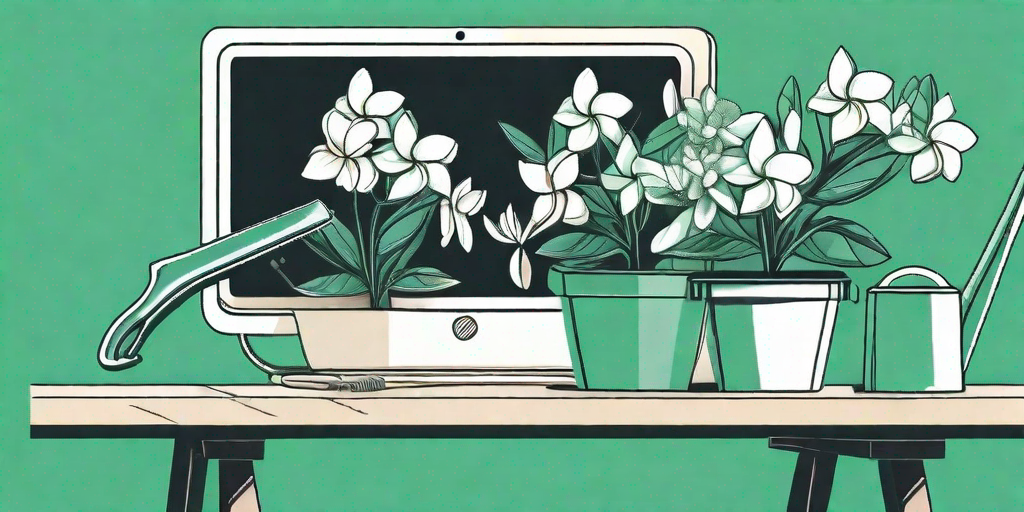
Ah, the Plumeria. A tropical beauty that can make any garden feel like a Hawaiian paradise. But what happens when your Plumeria refuses to bloom? It's like a luau without the hula dancers. Don't fret, dear gardener, we're here to help you troubleshoot your Plumeria problems and get your garden party back on track.
Understanding Your Plumeria
Before we dive into the nitty-gritty of Plumeria care, it's essential to understand what makes this plant tick. Plumeria, also known as Frangipani, is a tropical plant native to the Caribbean, Central America, and Mexico. It's a sun-loving, heat-tolerant plant that thrives in well-drained soil.
Plumeria is known for its vibrant, fragrant flowers that bloom from spring to early fall. However, if your Plumeria isn't blooming, it could be due to a variety of factors such as inadequate sunlight, improper watering, or nutrient deficiencies. But don't worry, we'll cover all these aspects in detail.
Let There Be Light
How Much Sun Does a Plumeria Need?
Plumeria loves the sun. It's like a beach bum, but without the need for a tan. If your Plumeria isn't blooming, it might not be getting enough sunlight. Plumeria needs at least six hours of direct sunlight each day to produce blooms.
If your plant is in a shaded area, consider moving it to a sunnier spot. Remember, Plumeria is a tropical plant, so it loves warm, sunny climates. If you live in a region with cold winters, you might need to bring your Plumeria indoors during the colder months.
Can Plumeria Get Too Much Sun?
While Plumeria loves the sun, too much of a good thing can be harmful. If your Plumeria is getting more than 10 hours of direct sunlight each day, it could be experiencing sunburn. Yes, plants can get sunburn too! Symptoms of sunburn include yellow or brown leaves and a lack of blooms.
If you suspect your Plumeria is getting too much sun, consider providing some shade during the hottest part of the day. Remember, balance is key when it comes to sunlight.
Watering Woes
How Much Water Does a Plumeria Need?
When it comes to watering, Plumeria is a bit like Goldilocks. It doesn't like too much water, or too little, but just the right amount. Overwatering can lead to root rot, while underwatering can cause the plant to become dehydrated and stressed.
A good rule of thumb is to water your Plumeria when the top inch of soil is dry. In hot, dry climates, this might mean watering every 2-3 days. In cooler, humid climates, once a week might be sufficient.
Signs of Overwatering and Underwatering
Overwatered Plumeria may have yellow leaves that fall off easily. The plant may also appear wilted, despite the soil being wet. Underwatered Plumeria, on the other hand, may have dry, brittle leaves and a general lack of vigor.
If you're unsure whether your Plumeria is getting too much or too little water, check the soil. If it's constantly soggy, you're likely overwatering. If it's bone dry, you're probably underwatering.
Nutrient Needs
What Nutrients Does a Plumeria Need?
Plumeria needs a balanced diet to bloom. This means providing it with a good quality, slow-release fertilizer that contains nitrogen, phosphorus, and potassium. Nitrogen promotes leaf growth, phosphorus supports blooming, and potassium aids in overall plant health.
Additionally, Plumeria benefits from micronutrients like magnesium and iron. These can often be found in specialty Plumeria or tropical plant fertilizers.
Signs of Nutrient Deficiencies
If your Plumeria isn't blooming, it might be lacking in essential nutrients. Signs of nutrient deficiencies can include yellow leaves (nitrogen deficiency), poor blooming (phosphorus deficiency), or weak, stunted growth (potassium deficiency).
If you suspect a nutrient deficiency, consider getting your soil tested. This can help you determine what nutrients your Plumeria is lacking and how to correct the issue.
FAQs
- Why is my Plumeria not blooming?
There could be several reasons why your Plumeria isn't blooming. These include inadequate sunlight, improper watering, or nutrient deficiencies.
- How much sun does a Plumeria need?
Plumeria needs at least six hours of direct sunlight each day to produce blooms.
- How often should I water my Plumeria?
Water your Plumeria when the top inch of soil is dry. This might be every 2-3 days in hot, dry climates, or once a week in cooler, humid climates.
- What kind of fertilizer does Plumeria need?
Plumeria needs a balanced, slow-release fertilizer that contains nitrogen, phosphorus, and potassium. It also benefits from micronutrients like magnesium and iron.
Conclusion
So there you have it, folks. The secret to getting your Plumeria to bloom is a combination of adequate sunlight, proper watering, and balanced nutrition. With a little patience and care, your Plumeria will be the belle of the garden party in no time.
Remember, gardening is a journey, not a destination. So don't be discouraged if your Plumeria doesn't bloom overnight. Keep tending to it, and soon enough, you'll be rewarded with a tropical paradise right in your backyard.















